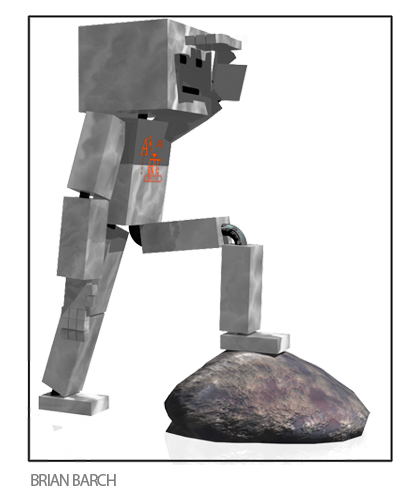
After suffering a year of health problems, James Richmond, the Aragon Robotics Team’s faculty advisor, has stepped down from his position; as a result, the Robotics Team has faced an array of questions concerning the future of the program.
Founded a decade ago, the Robotics team was rooted in a group of students who set up a principle of “student-run, student-built, and student-based.” Their goal was to create a team environment in which the students, rather than the mentors, had control over the decision making processes. This made the Aragon team unique in contrast to other robotics teams where mentors or and professional engineers did most of the robot designing.
This “student-run, student-built” theology, while a prideful part of the team, has also seen its controversy. Some mentors are a bit uneasy about the fact that students have upon occasion disregarded suggestions made by the mentors.
Also, this theology has consistently put the team at disadvantages at competition. Unlike many other teams who have experienced professionals help design their robots, the Aragon team’s robot has been created primarily by students.
Junior Andrew Yao says, “Unlike some teams, we don’t get sponsored by ‘super techie’ companies like NASA. In some cases, NASA sends in parts and the team just puts [them] together whereas ART [Aragon Robotics Team] makes each part that doesn’t come with the [standard] kit of parts”.
In recent years, the robotics team has not seen top placement at competitions. However, this may not mean much to the team as one might expect. President Anna Olson says, “[The team is] more interested in the learning experience than competition rank.”
Indeed, the Robotics team is a great opportunity for education. Mentor Geary Chew says, “many of the topics covered in robotics can prepare you for a future in engineering, math, computer science or media animations to name a few.” Technology, after all, has become integral in society today.
Not only is Robotics a great educational experience, but it is also a social outlet. “[Everyone] become[s] one big family, and it’s the greatest experience because you have so much fun, [and] also learn a lot,” sophomore Brittney Chew says.
It is no surprise that the Robotics team can feel like a family; during build season, the team is literally an eighteen-hour-a-week commitment for six weeks.
The high time commitment, however, is one of the key issues among faculty mentors. Wu explains that, “being the advisor for robotics is more strenuous and time consuming than advising other clubs.”
Last year, Richmond became the lone faculty advisor of the team, which greatly impacted the team. Meetings were cut from two times a week to once a week during the off season. During build season, the team often had to ask a multitude of teachers to help supervise. Overall, the Robotics team has not been able to meet as often as they would like.
“[Mentoring] is a huge time commitment … Some say that one person can’t do it alone, and that’s probably a fair statement,” Olson says.
With Richmond’s resignation, a new team of faculty advisors have stepped up. Teachers Kevin Doyle, Katie Ward, and Jennifer Wei are currently serving as the faculty advisors for the team.
Discussions are currently in progress as to how the team will move forward. “We are trying to move the team into a direction that is more sustainable,” says Wei.
In a meeting during late October, the team discussed the future of Robotics, including expanding horizons to other robotics competitions, engaging in more school involvement, a possible shift to more mentor leadership, more rigorous training processes, and other issues which still need to be addressed.
Regardless of the rising issues, the team has been performing fairly well. At the end of October, the robotics team competed at Cal Games where they were ranked 9th out of 35 teams.
In a meeting early November, the team voted and decided to spend the spring season in rigorous training rather than building a robot for the FIRST Robotics Competition.
This marks the first year it does not participate in the competition in its decade long history. There is full intention, however, to compete during the 2011-2012 school year.





These problems sound all too familiar. Our team too has been proud designers and builders of our robots, with only collarborative help from mentors But the availability of parents is negligable, the support from the school has been grudgingly given, and most of us who have been mentoring have been burned out by the six week build period. Aragon’s problems highlight the down side of the concentrated build period.